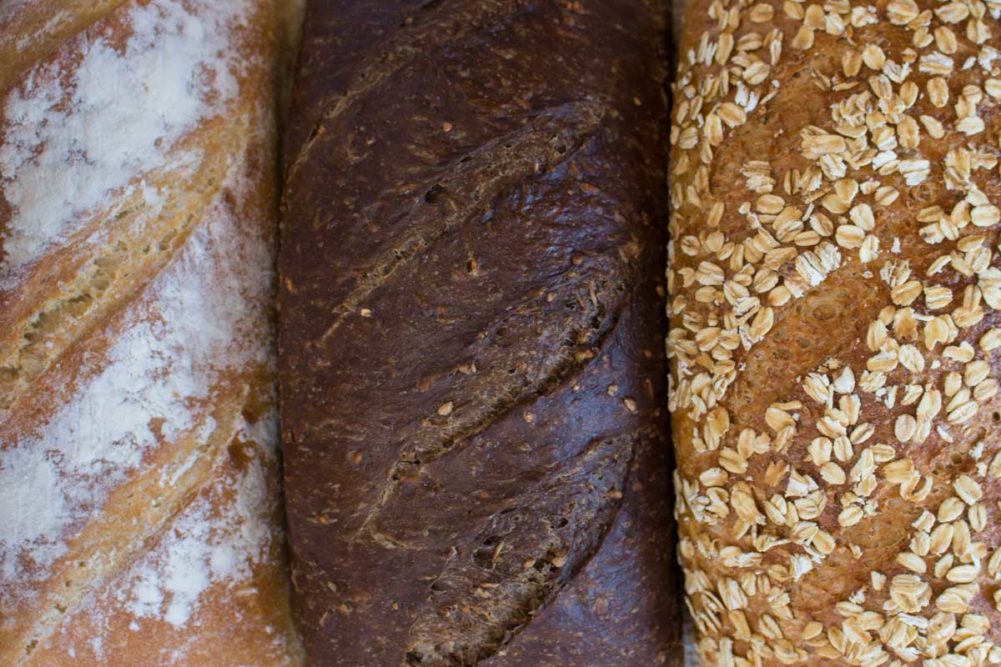While the functionality of DATEM, SSL and mono- and diglycerides cannot be overstated, these ingredients are falling out of favor for not being clean label friendly. Instead, bakers are turning toward enzymes and lecithins or a combination of ingredients to provide similar functionality.
“This has been done so bakers can remove negative-sounding chemical ingredient names and reduce the amount of saturated fats in their baked goods,” said Troy Boutte, bakingHUB and innovation director, AB Mauri North America.
AB Mauri offers chemical and clean label emulsifiers for industrial and artisan baking.
He pointed to the late 2000s when Japan approved the use of SSL in baked goods. While Japanese bakery operators immediately noticed a 30% uptick in line speeds with the addition of SSL, the ingredient was becoming taboo in the United States, along with DATEM. These ingredients were being replaced with phospholipases, which resulted in sticky doughs and reduced line speeds.
“Based on those early learnings, bakeries today have started using a combination of lecithin and phospholipases, which provide very good machineability, strength, crumb grain, volume and slicing while still being clean label,”Mr. Boutte said.
Lecithin is composed of phospholipids derived from fats and oils. Phospholipids are the same components that give whole eggs their emulsification abilities.
“In bakery products, lecithins can strengthen dough, ensure even mixing of batter, decrease stickiness of dough and improve shelf life,” said Mark Stavro, senior director of marketing, Bunge Loders Croklaan. “It also acts as a release agent during the mixing and machining processes, which contributes to easier cleanup of equipment on a production line.”
Sunflower is a common source of lecithin, and Bunge offers a range of non-GMO sunflower lecithin products and controls the process from farm to ingredient manufacturing.
Kerry Ingredients also offers a line of non-GMO sunflower lecithin in liquid and powdered forms. These ingredients can be effective in replacing conventional emulsifiers like DATEM in baked goods.
Lecithin also improves the functionality of enzyme blends that are sometimes used as a clean label alternative to DATEM or SSL.
“We successfully accomplish removing DATEM or SSL using very specific enzyme blends,” explained Steven Mallory, senior application specialist, DuPont Nutrition & Biosciences. “The functionality of these blends generally is improved with the use of lecithin, either liquid or de-oiled powdered lecithin, which is much easier to scale and handle in the plant. The enzyme blends we have developed work on each fraction of the wheat to improve loaf volume or production tolerance.”
Blends of enzymes can be helpful in achieving some of the same functionality of emulsifiers like Kerry Ingredients’ Puremul that can replace monoglyceride. Puremul still delivers improved tolerance, machineability, slicing and shelf life without the use of conventional dispersible monoglyceride.
Brolite has also developed specialized enzyme blends to replace emulsifiers like DATEM, mono- and diglycerides.
However, sometimes to achieve the same functionality, enzymes need to be used in conjunction with emulsifiers, replacing some but not all of these effective ingredients.
“When removing those types of ingredients and replacing them with others considered to be ‘clean label,’ bakery manufacturers can find it difficult to maintain the same levels of quality, structure, taste, texture, shelf life and appearance,” said Jim Robertson, director, emulsifier portfolio at Corbion. “Additionally, the clean label ingredients bakers often choose can be more expensive, resulting in higher costs on those production lines.”
These costs can take a product out of the price range for some consumers, and the bakery can take a hit in sales. It’s important for bakers to consider if clean label is that important to their target shopper before making this switch.
“In today’s environment, clean label is a key factor for many bakers,” Mr. Mallory explained. “However, many reports show that some of the fastest growing breads are not clean label or use emulsifiers such as DATEM or monoglycerides. The vast majority of consumers want an affordable loaf of bread that tastes great and has a reasonable shelf life. Label declarations are secondary.”
A compromise to balance cost and clean label concerns can come in the form of combining emulsifiers and enzymes. Mr. Robertson argued that this is where functionality is maximized.
“We think there are certainly situations where emulsifier- or enzyme-only solutions make sense, but it’s important to consider the overall goals and market factors of each product on a case-by-case basis to determine the best course of action,” he said.
As bakers consider whether clean label is worth chasing in regard to emulsifiers, which contain so much functionality on their own, it’s good to be aware of regulations and labeling. DATEM has GRAS status while SSL is regulated in dosage, Mr. Mallory said. And lecithin is well-recognized as a clean label emulsifier while monoglycerides, despite the long name, are naturally occurring substances and accepted by most food manufacturers.
“Regulations differ strongly by country, too,” he warned. “Enzyme modified lecithin is allowed in the United States, but it is not allowed in other countries.”
Despite their clean label challenges, emulsifiers’ functionality still brings so much to bread production.
“No functional ingredient can do more to help bakers deliver consistent product quality and processing efficiency than emulsifiers,” Mr. Robertson said.
When it comes to producing cost-conscious bread that is not only soft but also strong enough to withstand the commercial baking process, emulsifiers get the job done.
This article is an excerpt from the August 2020 issue of Baking & Snack. To read the entire feature, click here.






